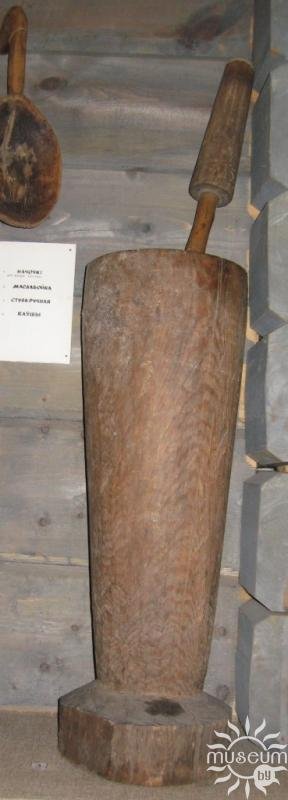The name of this device comes from the old word "step." Stupa is most often used to clean hard peel or chop the grain, soften the stalks of flax, hemp, tobacco. Purified groats have not been stored for a long time, therefore cereals are pounded in a mortar as needed for cooking porridge for one to two weeks. The museum exhibits a stupa hollowed out of solid wood. Pest also solid, two-way, with the interception in the middle for ease of operation. Stupa with pesto was considered not just economic items. They were used in wedding and funeral rites. Healing properties were attributed to them: in a mortar they tried to “pound” the disease both in humans and in domestic cattle. A lot of rules and prohibitions were associated with these items. So according to the beliefs of our ancestors, you cannot leave a pestle in a mortar for the night, otherwise an evil force will “crush” the disease in it. Therefore the stupa was not left open and after use it was surely turned it upside down.

